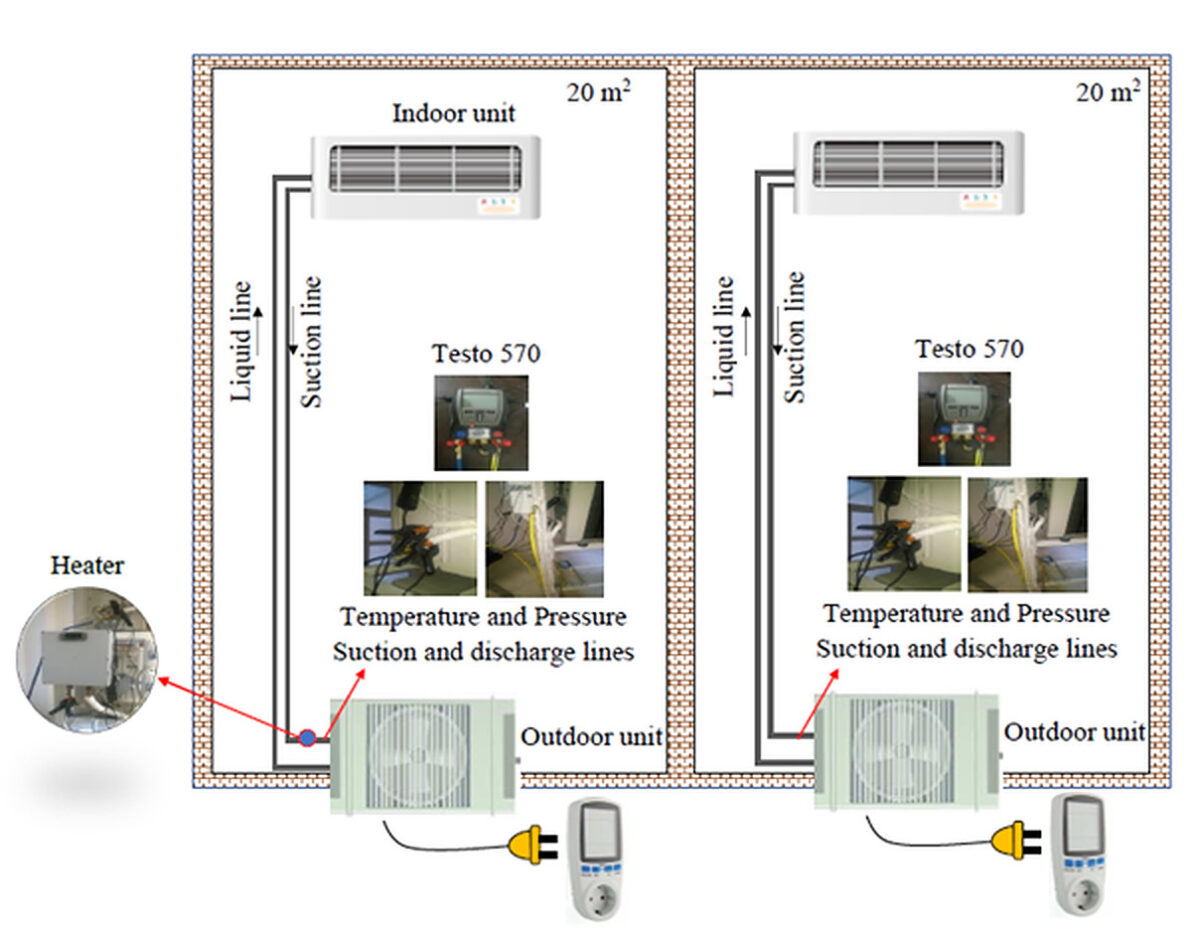A research group from the Burdur Mehmet Akif Ersoy University in Turkey has investigated how solar power may help reduce carbon emissions and improve the performance of heating, ventilation, and air conditioning (HVAD) systems.
“We aimed to improve the life cycle climate performance using a solar energy-powered heater in a residential air conditioner,” the research's lead author, Azim Dogus Tuncer, told pv magazine. “We found that using the heater in the system improved the coefficient of performance and decreased negative environmental effects by reducing the energy consumption of the compressor in the system.”
The scientists investigated, in particular, how the energy consumption of an air conditioning (AC) system may be improved by using PV and then assessed the environmental impact of this approach via the life cycle climate performance (LCCP) method, which includes all cradle-to-grave emissions.
The experimental setting included two 20 m2 insulated rooms with a total area of 65 m2. One of the rooms was equipped with solar-powered AC while the other one used AC powered by grid electricity.
The PV-energized system was in turn equipped with a heater added to the compressor inlet of the air conditioning system to heat the refrigerant, with pressure and temperature sensors being utilized to observe the changes. The scientists also used a wattmeter to measure the electricity consumption of the compressor.
They also assumed the outdoor AC system to have a capacity of 3.5 kW, a seasonal coefficient of performance of 38 W/W, and an energy efficiency ratio of 9.40 BTU/hW. Its dimensions are 880 mm x 280 mm x 363 mm and its weight is 27.2 kg. Its refrigerant is R410A and the expected lifetime is 15 years.
“The units have been connected with a copper pipe of about 2 m in length and insulation was made to prevent any effect on the pipe, the research team explained. “The heater has one inlet and one outlet with a copper pipe. At the inlet of the heater, there is the part sent to the compressor at the outlet of the refrigerant returning from the indoor unit.”
It tested the system with different heater set values of 18 C, 19 C, and 20 C, respectively, and ascertained that heaters set values
decreased by 7.74%, 26.62%, and 27.28%, respectively. It also found that the use of PV significantly reduces both energy and emission values.
They presented their findings in the study “Experimental investigation of a solar-assisted air conditioning system: Energy and life cycle climate performance analysis,” published in Thermal Science and Engineering Progress.
This content is protected by copyright and may not be reused. If you want to cooperate with us and would like to reuse some of our content, please contact: editors@pv-magazine.com.




This article, especially the last few paragraphs, are incoherent and incomprehensible.